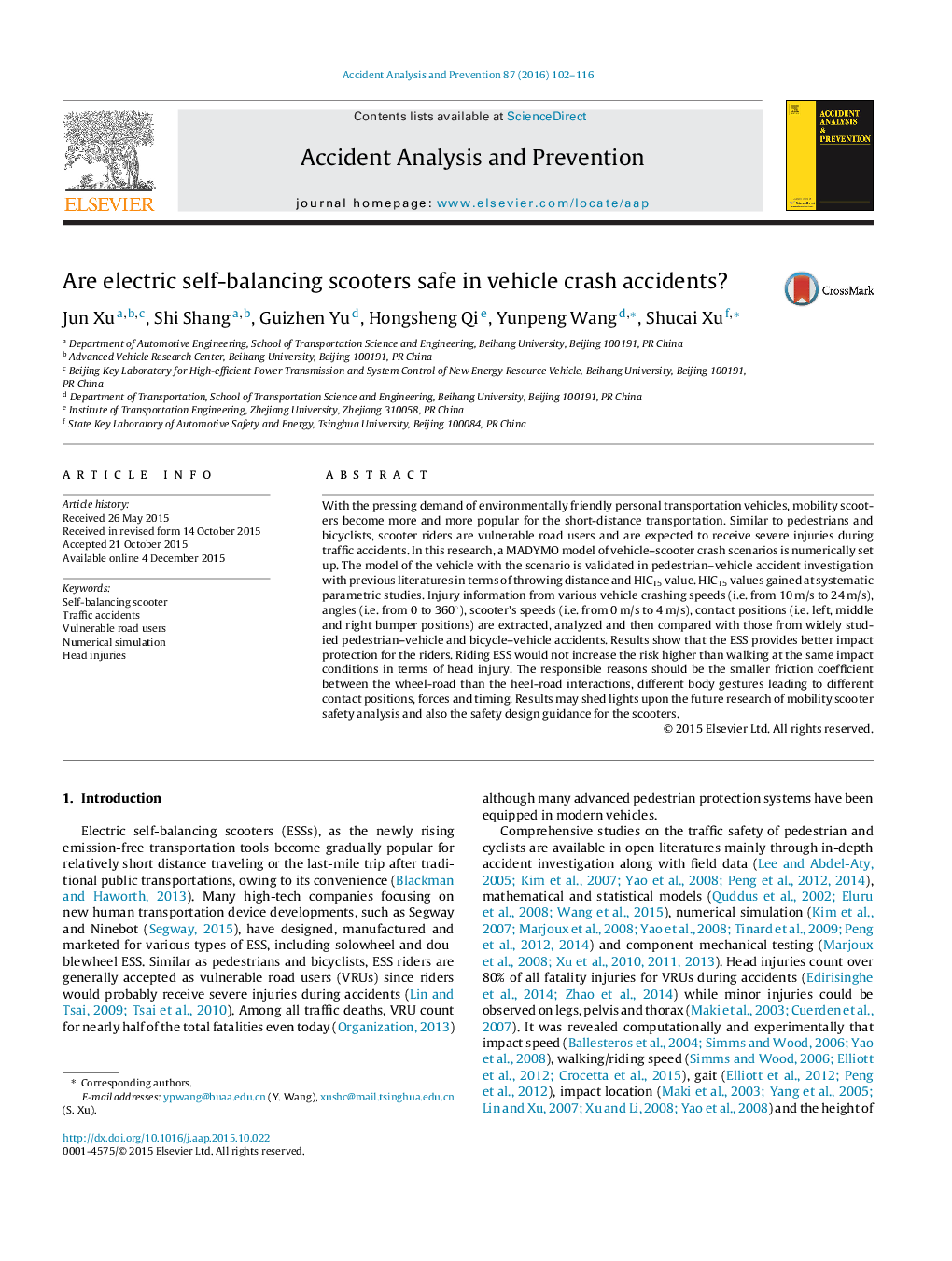| کد مقاله | کد نشریه | سال انتشار | مقاله انگلیسی | نسخه تمام متن |
|---|---|---|---|---|
| 572086 | 1452910 | 2016 | 15 صفحه PDF | دانلود رایگان |
• Electric self-balancing scooter (ESS) and its rider are modeled to analyze the contact process with vehicle numerically.
• Virtual impact accident of ESS-vehicle with various contact conditions is numerically investigated.
• ESSs are proven to perform no higher risk than walking and in most vehicle accident cases in terms of head injury.
With the pressing demand of environmentally friendly personal transportation vehicles, mobility scooters become more and more popular for the short-distance transportation. Similar to pedestrians and bicyclists, scooter riders are vulnerable road users and are expected to receive severe injuries during traffic accidents. In this research, a MADYMO model of vehicle–scooter crash scenarios is numerically set up. The model of the vehicle with the scenario is validated in pedestrian–vehicle accident investigation with previous literatures in terms of throwing distance and HIC15 value. HIC15 values gained at systematic parametric studies. Injury information from various vehicle crashing speeds (i.e. from 10 m/s to 24 m/s), angles (i.e. from 0 to 360°), scooter's speeds (i.e. from 0 m/s to 4 m/s), contact positions (i.e. left, middle and right bumper positions) are extracted, analyzed and then compared with those from widely studied pedestrian–vehicle and bicycle–vehicle accidents. Results show that the ESS provides better impact protection for the riders. Riding ESS would not increase the risk higher than walking at the same impact conditions in terms of head injury. The responsible reasons should be the smaller friction coefficient between the wheel-road than the heel-road interactions, different body gestures leading to different contact positions, forces and timing. Results may shed lights upon the future research of mobility scooter safety analysis and also the safety design guidance for the scooters.
Figure optionsDownload as PowerPoint slide
Journal: Accident Analysis & Prevention - Volume 87, February 2016, Pages 102–116
